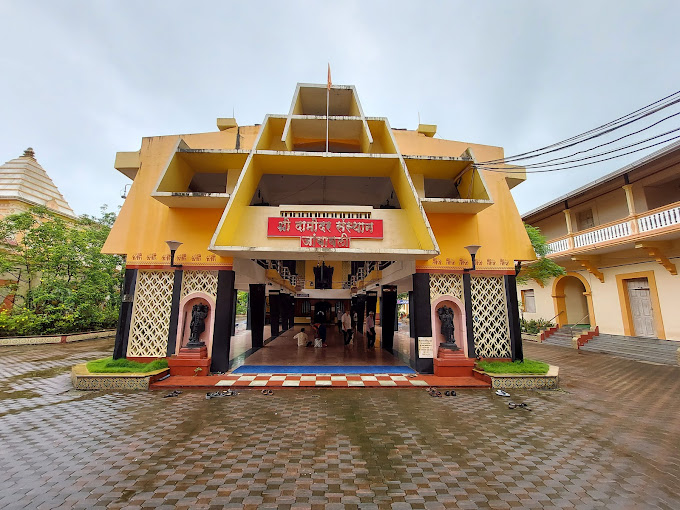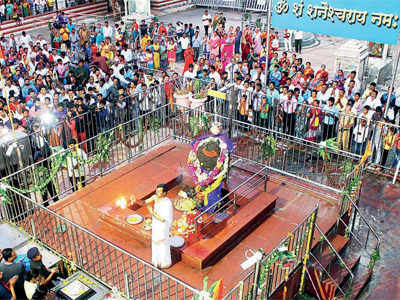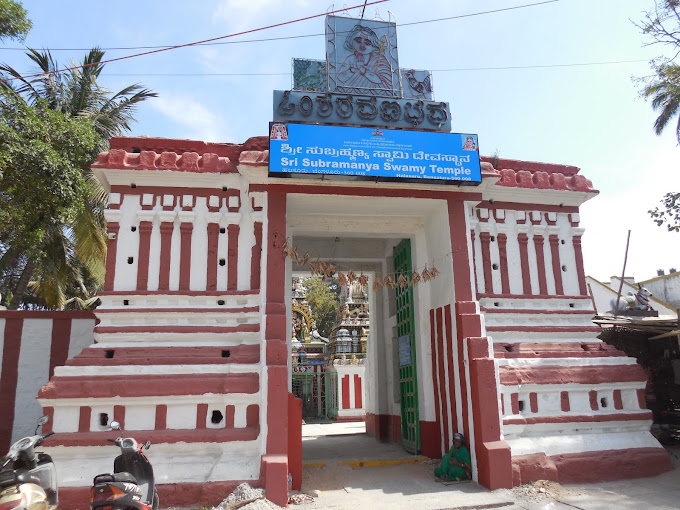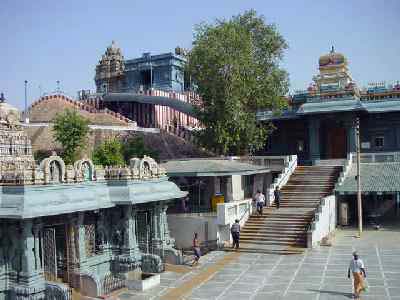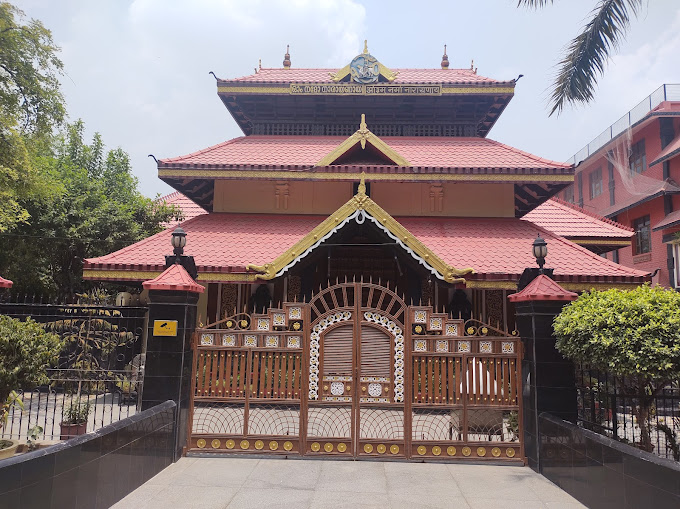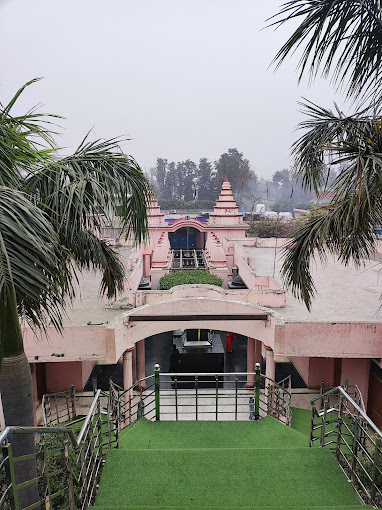Konark Sun Temple – Odisha
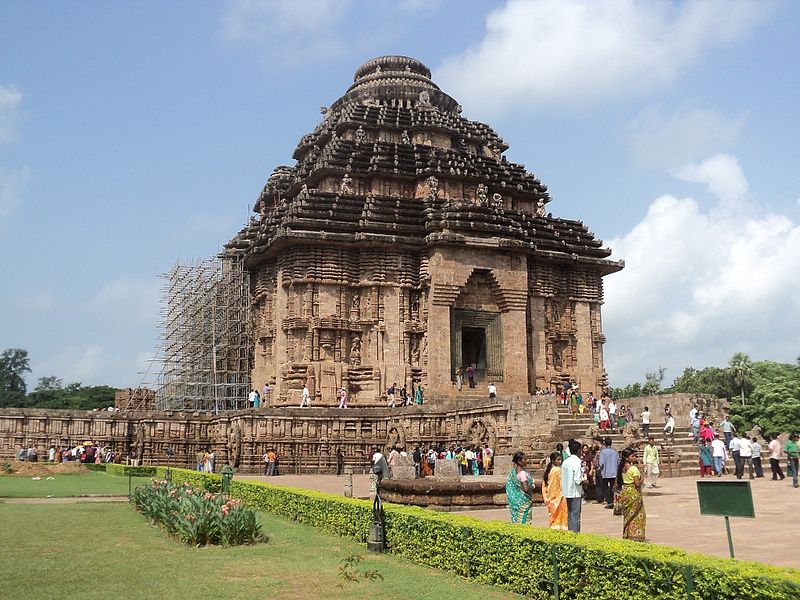
Address
Konark Sun Temple – Konark, Odisha 752111
Diety
Surya (Sun)
Introduction
Konark Sun Temple is a 13th-century CE (year 1250) Sun temple at Konark about 35 kilometres (22 mi) northeast from Puri on the coastline of Odisha, India.The temple is attributed to king Narasimhadeva I of the Eastern Ganga dynasty about 1250 CE. Dedicated to the Hindu Sun God Surya, what remains of the temple complex has the appearance of a 100-foot (30 m) high chariot with immense wheels and horses, all carved from stone. Once over 200 feet (61 m) high,much of the temple is now in ruins, in particular the large shikara tower over the sanctuary; at one time this rose much higher than the mandapa that remains. The structures and elements that have survived are famed for their intricate artwork, iconography, and themes, including erotic kama and mithuna scenes. Also called the Surya Devalaya, it is a classic illustration of the Odisha style of Architecture or Kalinga architecture.The cause of the destruction of the Konark temple is unclear and still remains a source of controversy.Theories range from natural damage to deliberate destruction of the temple in the course of being sacked several times by Muslim armies between the 15th and 17th centuries. This temple was called the “Black Pagoda” in European sailor accounts as early as 1676 because it looked like a great tiered tower which appeared black.Similarly, the Jagannath Temple in Puri was called the “White Pagoda”. Both temples served as important landmarks for sailors in the Bay of Bengal.
Puranic Significance
The oldest surviving Vedic hymns, such as hymn 1.115 of the Rigveda, mention Surya with particular reverence for the “rising sun” and its symbolism as dispeller of darkness, one who empowers knowledge, the good, and all life. However, the usage is context specific. In some hymns, the word Surya simply means sun as an inanimate object, a stone, or a gem in the sky (Rigvedic hymns 5.47, 6.51 and 7.63) while in others it refers to a personified deity. In the layers of Vedic texts, Surya is one of the several trinities along with Agni and either Vayu or Indra, which are presented as an equivalent icon and aspect of the Hindu metaphysical concept called the Brahman. In the Brahmanas layer of Vedic literature, Surya appears with Agni (fire god) in the same hymns. Surya is revered for the day, and Agni for its role during the night. According to Kapila Vatsyayan, the concept of a Surya–Agni relationship evolves, and in later literature Surya is described as Agni representing the first principle and the seed of the universe. It is in the Brahmanas layer of the Vedas, and the Upanishads that Surya is explicitly linked to the power of sight, and to visual perception and knowledge. He is then internalized and said to be the eye, as ancient Hindu sages suggested abandonment of external rituals to gods in favor of internal reflection and meditation of the gods within, in one’s journey to realize the Atman (soul, self) within, in texts such as the Brihadaranyaka Upanishad, Chandogya Upanishad, Kaushitaki Upanishad, and others. The Mahabharata epic opens its chapter on Surya by reverentially calling him the “eye of the universe, soul of all existence, origin of all life, goal of the Samkhyas and Yogis, and symbolism for freedom and spiritual emancipation”. In the Mahabharata, Karna is the son of Surya and an unmarried princess named Kunti. The epic describes Kunti’s difficult life as an unmarried mother, then her abandonment of Karna, followed by her lifelong grief. Baby Karna is found and then adopted, and grows up to become one of the central characters in the great battle of Kurukshetra where he fights his half-brothers. The name Konark derives from the combination of the Sanskrit words Kona (corner or angle) and Arka (the sun). The context of the term Kona is unclear, but probably refers to the southeast location of this temple either within a larger temple complex or in relation to other sun temples on the subcontinent. The Arka refers to the Hindu sun god Surya. The Sun temple of Konark, the Puri Jagannth temple and the Lingaraj temple of Bhubaneswar form a bilateral triangle and Konark temple is one Kone (angular point of a triangle). Thus the word ‘Kone’ has a meaning in making the nomenclature. Konark, also referred to in Indian texts by the name Kainapara, was a significant trading port by the early centuries of the common era. The current Konark temple dates to the 13th century, though evidence suggests that a sun temple was built in the Konark area by at least the 9th century. Several Puranas mention Surya worship centers in Mundira, which may have been the earlier name for Konark, Kalapriya (Mathura), and Multan (now in Pakistan). The Chinese Buddhist pilgrim and traveler Hiuen-tsang (also referred to as Xuanzang) mentions a port city in Odisha named Charitra. He describes the city as prosperous, with five convents and “storeyed towers that are very high and carved with saintly figures exquisitely done”. Since he visited India in the 7th century, he could not have been referring to the 13th-century temple, but his description suggests either Konark or another Odisha port city already featuring towering structures with sculptures. According to the Madala Panji, there was at one time another temple in the region built by Pundara Kesari. He may have been Puranjaya, the 7th-century ruler of the Somavasmi Dynasty. The Konark Sun Temple was built in 1250 CE during the reign of the Eastern Ganga King Narsimhadeva-1 from stone in the form of a giant ornamented chariot dedicated to the Sun god, Surya. In Hindu Vedic iconography Surya is represented as rising in the east and traveling rapidly across the sky in a chariot drawn by seven horses. He is described typically as a resplendent standing person holding a lotus flower in both his hands, riding the chariot marshaled by the charioteer Aruna. The seven horses are named after the seven meters of Sanskrit prosody: Gayatri, Brihati, Ushnih, Jagati, Trishtubha, Anushtubha, and Pankti. Typically seen flanking Surya are two females who represent the dawn goddesses, Usha and Pratyusha. The goddesses are shown to be shooting arrows, a symbol of their initiative in challenging the darkness.The architecture is also symbolic, with the chariot’s twelve pairs of wheels corresponding to the 12 months of the Hindu calendar, each month paired into two cycles (Shukla and Krishna). Damage and ruins: The temple was in ruins before its restoration. Speculation continues as to the cause of the destruction of the temple. Early theories stated that the temple was never completed and collapsed during construction. This is contradicted by textual evidence and evidence from inscriptions. The Kenduli copper plate inscription of 1384 CE from the reign of Narasimha IV seems to indicate that the temple was not only completed but an active site of worship. Another inscription states that various deities in the temple were consecrated, also suggesting that construction of the temple had been completed. A non-Hindu textual source, the Akbar-era text Ain-i-Akbari by Abul Fazl dated to the 16th century, mentions the Konark temple,describing it as a prosperous site with a temple that made visitors “astonished at its sight”, with no mention of ruins. 200 years later, during the reign of the Marathas in Odisha in the 18th century, a Maratha holy man found the temple abandoned and covered in overgrowth. The Marathas relocated the temple’s Aruna stambha (pillar with Aruna the charioteer seated atop it) to the Lion’s Gate entrance of the Jagannath Temple in Puri. Texts from the 19th century do mention ruins, which means the temple was damaged either intentionally or through natural causes sometime between 1556 and 1800 CE. After the Sun Temple ceased to attract faithful, Konark became deserted, left to disappear in dense forests for years. According to Thomas Donaldson, evidence suggests that the damage and the temple’s ruined condition can be dated to between the late 16th century and the early 17th century from the records of various surveys and repairs found in early 17th-century texts. These also record that the temple remained a site of worship in the early 17th century. These records do not state whether the ruins were being used by devotees to gather and worship, or part of the damaged temple was still in use for some other purpose.
Special Features
The Konark temple presents this iconography on a grand scale. It has 24 elaborately carved stone wheels which are nearly 12 feet (3.7 m) in diameter and are pulled by a set of seven horses. When viewed from inland during the dawn and sunrise, the chariot-shaped temple appears to emerge from the depths of the blue sea carrying the sun.The temple plan includes all the traditional elements of a Hindu temple set on a square plan. According to Kapila Vatsyayan, the ground plan, as well the layout of sculptures and reliefs, follow the square and circle geometry, forms found in Odisha temple design texts such as the Silpasarini. This mandala structure informs the plans of other Hindu temples in Odisha and elsewhere. The main temple at Konark, locally called the deul, no longer exists. It was surrounded by subsidiary shrines containing niches depicting Hindu deities, particularly Surya in many of his aspects. The deul was built on a high terrace.The temple was originally a complex consisting of the main sanctuary, called the rekha deul, or bada deul (lit. big sanctum). In front of it was the bhadra deul (lit. small sanctum), or jagamohana (lit. assembly hall of the people) (called a mandapa in other parts of India. The attached platform was called the pida deul, which consisted of a square mandapa with a pyramidal roof. All of these structures were square at their core, and each was overlain with the pancharatha plan containing a variegated exterior.The central projection, called the raha, is more pronounced than the side projections, called kanika-paga, a style that aims for an interplay of sunlight and shade and adds to the visual appeal of the structure throughout the day. The design manual for this style is found in the Silpa Sastra of ancient Odisha. Twice as wide as they were high, the walls of the jagamohana are 100 feet (30 m) tall. The surviving structure has three tiers of six pidas each. These diminish incrementally and repeat the lower patterns. The pidas are divided into terraces. On each of these terraces stand statues of musician figures.The main temple and the jagamohana porch consist of four main zones: the platform, the wall, the trunk, and the crowning head called a mastaka.The first three are square while the mastaka is circular. The main temple and the jagamohana differed in size, decorative themes, and design. It was the main temple’s trunk, called the gandhi in medieval Hindu architecture texts, that was ruined long ago. The sanctum of the main temple is now without a roof and most of the original parts. On the east side of the main temple is the Nata mandira (lit. dance temple). It stands on a high, intricately carved platform. The relief on the platform is similar in style to that found on the surviving walls of the temple. According to historical texts, there was an Aruna stambha (lit. Aruna’s pillar) between the main temple and the Nata mandira, but it is no longer there because it was moved to the Jagannatha at Puri sometime during the troubled history of this temple. According to Harle, the texts suggest that originally the complex was enclosed within a wall 865 feet (264 m) by 540 feet (160 m), with gateways on three sides. The sun temple was made from three types of stone. Chlorite was used for the door lintel and frames as well as some sculptures. Laterite was used for the core of the platform and staircases near the foundation. Khondalite was used for other parts of the temple. According to Mitra, the Khondalite stone weathers faster over time, and this may have contributed to erosion and accelerated the damage when parts of the temples were destroyed. None of these stones occur naturally nearby, and the architects and artisans must have procured and moved the stones from distant sources, probably using the rivers and water channels near the site.The masons then created ashlar, wherein the stones were polished and finished so as to make joints hardly visible. The original temple had a main sanctum sanctorum (vimana), which is estimated to have been 229 feet (70 m)tall. The main vimana fell in 1837. The main mandapa audience hall (jagamohana), which is about 128 feet (39 m) tall, still stands and is the principal structure in the surviving ruins. Among the structures that have survived to the current day are the dance hall (Nata mandira) and the dining hall (Bhoga mandapa).
Century/Period/Age
13th-century CE
Managed By
Archaeological Survey of India (ASI)- Odisha
Nearest Bus Station
Puri
Nearest Railway Station
Bhubaneswar
Nearest Airport
Bhubaneswar
